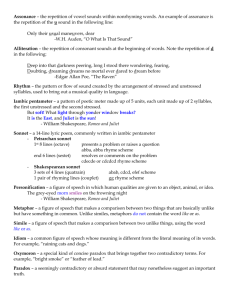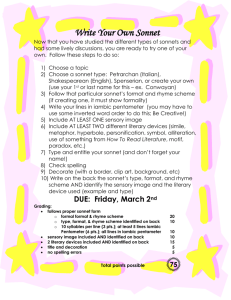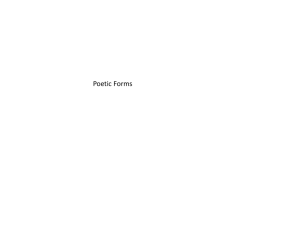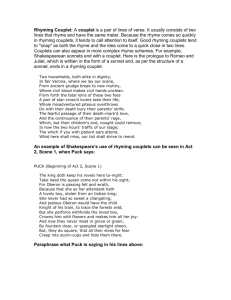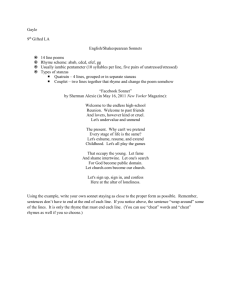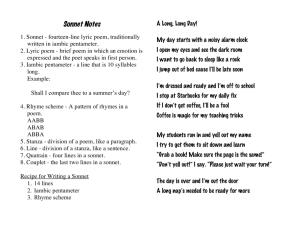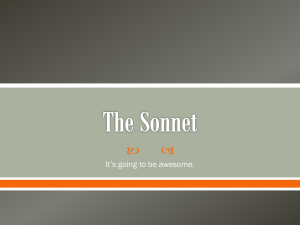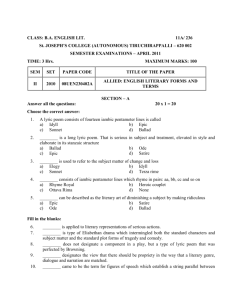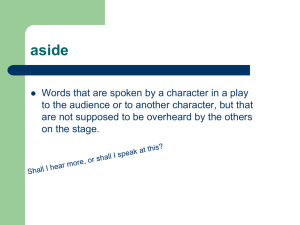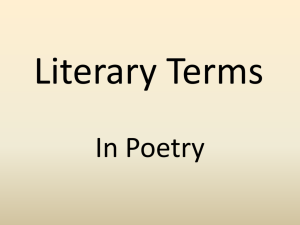poetry--test_review_chart_of_poems-
advertisement
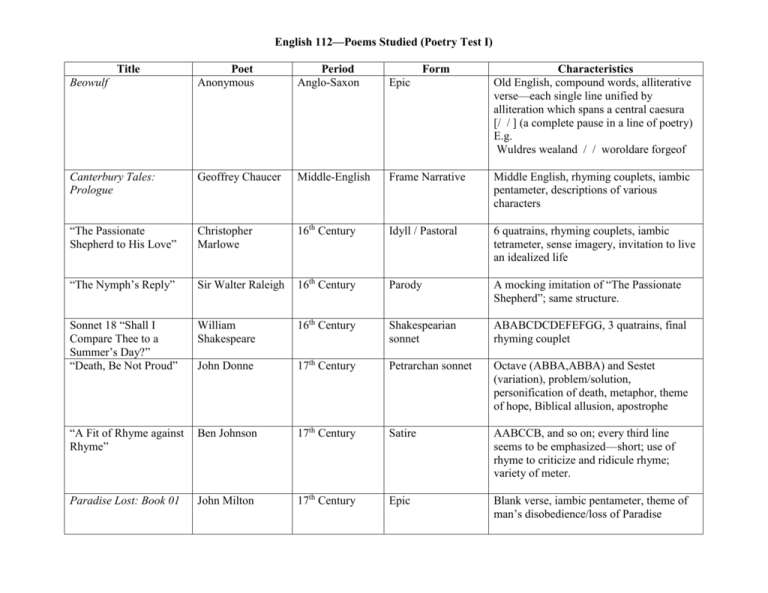
English 112—Poems Studied (Poetry Test I) Title Poet Anonymous Period Anglo-Saxon Epic Canterbury Tales: Prologue Geoffrey Chaucer Middle-English Frame Narrative Middle English, rhyming couplets, iambic pentameter, descriptions of various characters “The Passionate Shepherd to His Love” Christopher Marlowe 16th Century Idyll / Pastoral 6 quatrains, rhyming couplets, iambic tetrameter, sense imagery, invitation to live an idealized life “The Nymph’s Reply” Sir Walter Raleigh 16th Century Parody A mocking imitation of “The Passionate Shepherd”; same structure. Sonnet 18 “Shall I Compare Thee to a Summer’s Day?” “Death, Be Not Proud” William Shakespeare 16th Century Shakespearian sonnet ABABCDCDEFEFGG, 3 quatrains, final rhyming couplet John Donne 17th Century Petrarchan sonnet Octave (ABBA,ABBA) and Sestet (variation), problem/solution, personification of death, metaphor, theme of hope, Biblical allusion, apostrophe “A Fit of Rhyme against Rhyme” Ben Johnson 17th Century Satire AABCCB, and so on; every third line seems to be emphasized—short; use of rhyme to criticize and ridicule rhyme; variety of meter. Paradise Lost: Book 01 John Milton 17th Century Epic Blank verse, iambic pentameter, theme of man’s disobedience/loss of Paradise Beowulf Form Characteristics Old English, compound words, alliterative verse—each single line unified by alliteration which spans a central caesura [/ / ] (a complete pause in a line of poetry) E.g. Wuldres wealand / / woroldare forgeof Types of Poems: Definitions (not found in your notes) Add these to your “Novel and Short Story Terms and Definitions” handout. Epic—a long poem, typically one derived from ancient oral tradition, narrating the deeds and adventures of heroic or legendary figures or the history of a nation. Frame Narrative— the result of inserting one or more small stories within the body of a larger story that encompasses the smaller ones. [https://web.cn.edu/kwheeler/lit_terms_F.html]
